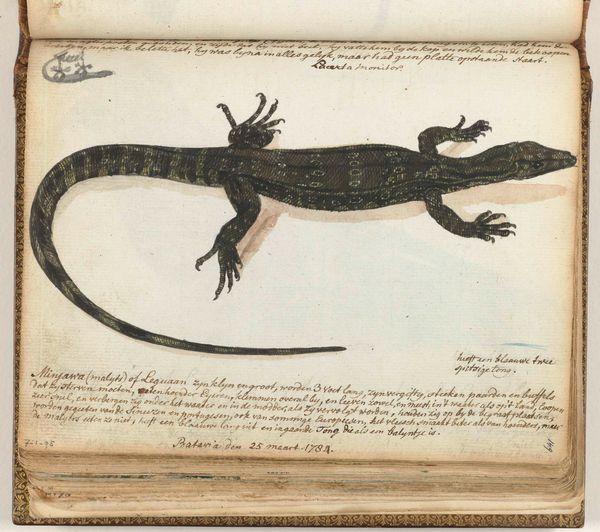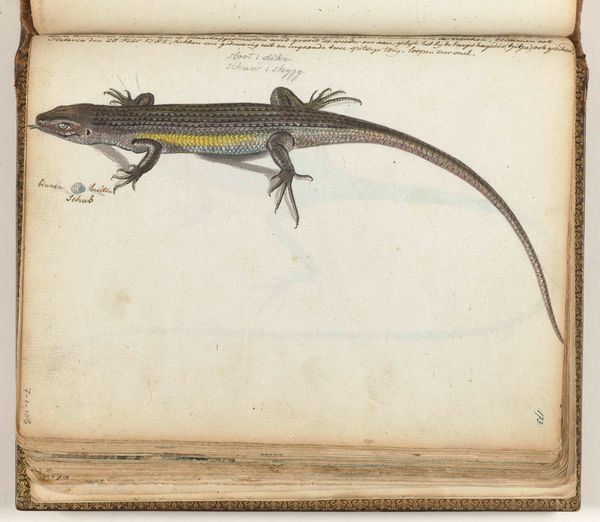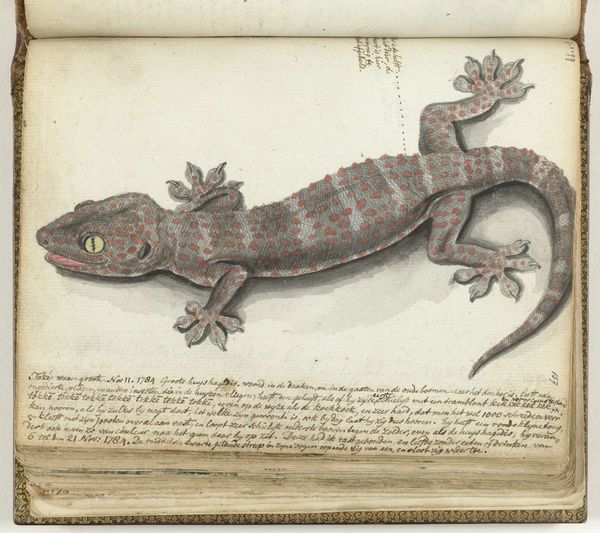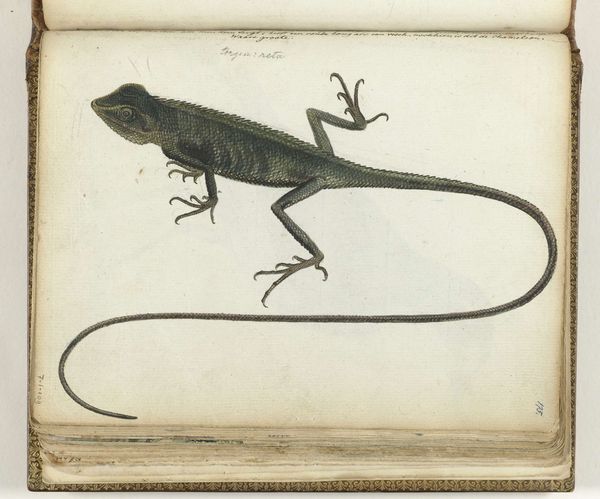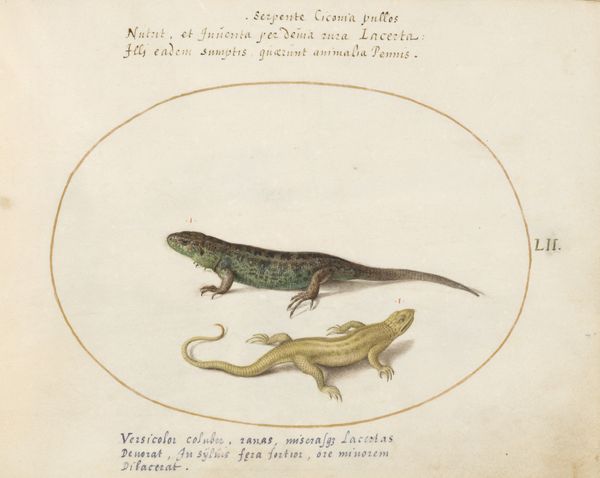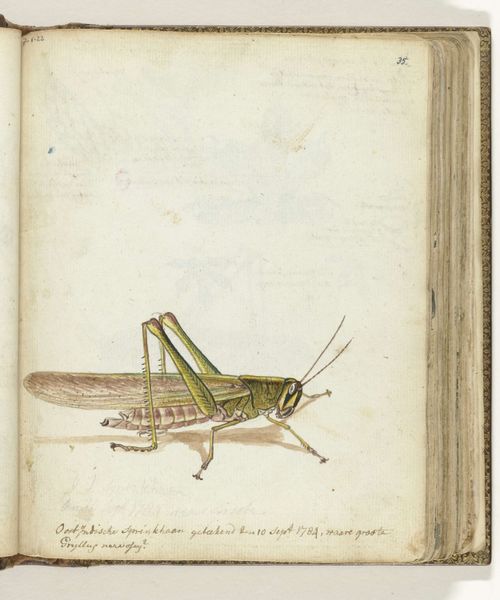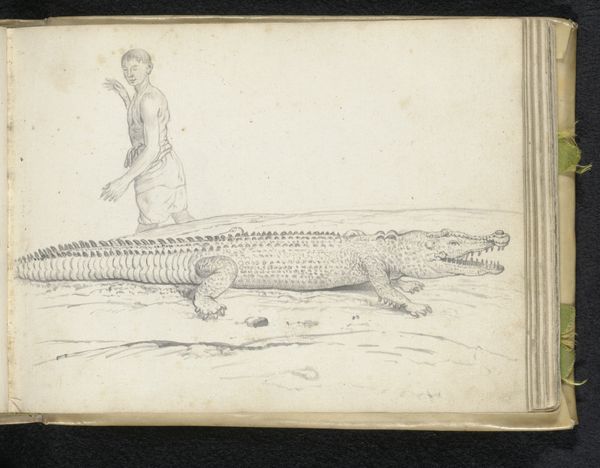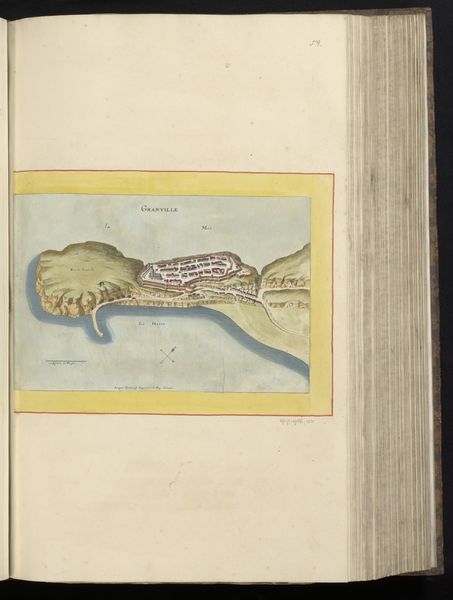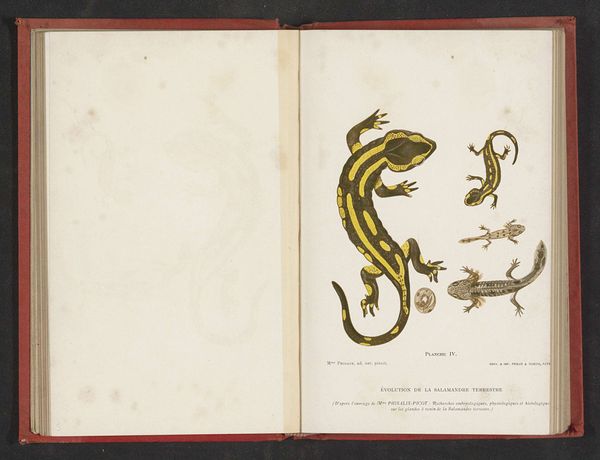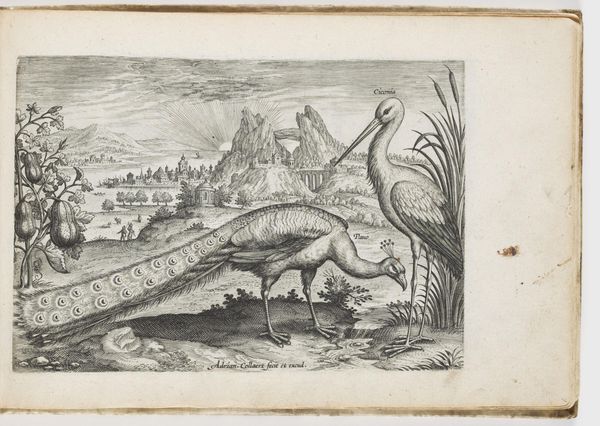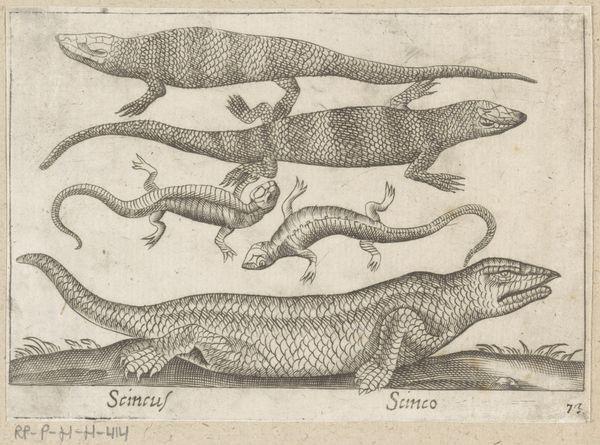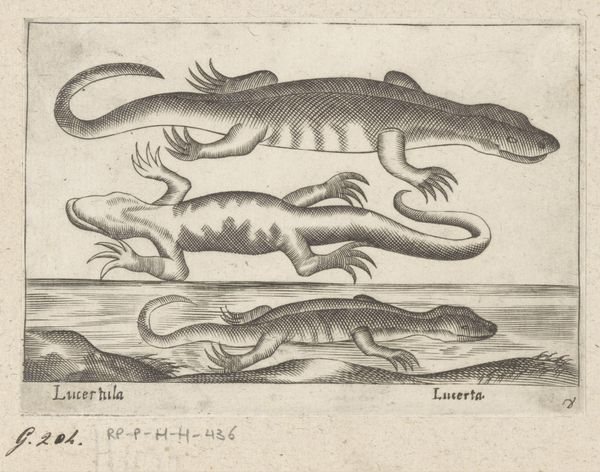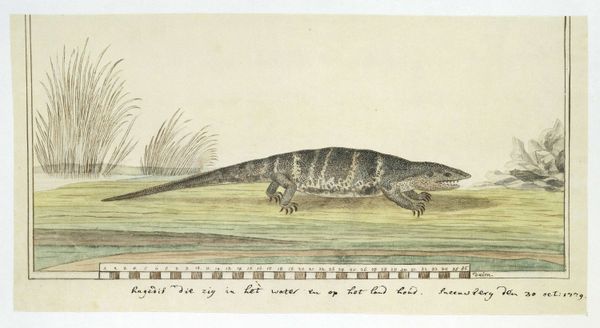
drawing, coloured-pencil, paper, watercolor, pencil
#
drawing
#
coloured-pencil
#
animal
#
pencil sketch
#
paper
#
watercolor
#
coloured pencil
#
pencil
#
watercolor
#
realism
Dimensions: height 195 mm, width 155 mm
Copyright: Rijks Museum: Open Domain
Editor: This is an interesting composition: two studies of lizards drawn by Jan Brandes around 1783. They are rendered in pencil, colored pencil, and watercolor on paper. There's almost a scientific feel to the way they're depicted, but they're very endearing. What do you see in this piece? Curator: The lizards evoke powerful cultural symbols. Across cultures, lizards embody adaptability and regeneration – shedding old skin, embracing new forms. Look closely. Do these depictions seem precise, almost clinical, or do you see something more? Editor: Well, the detail is incredible. But there's a life to them, despite the almost taxonomic approach. Curator: Precisely. Consider the historical context. Brandes, sketching these creatures, participates in a tradition of colonial exploration, of documenting the exotic ‘other.’ What emotional resonance might these lizards, removed from their native habitat and rendered on a page, have carried for European audiences? A sense of wonder, perhaps? Or of dominion? Editor: So the images act as more than just pictures of lizards... they are little trophies, symbols of the reach of empire? Curator: Yes. And consider this: the very act of drawing imbues the subject with a certain kind of importance. Even these small creatures become testaments to a vast world being catalogued and consumed. Editor: It is intriguing how something that looks like documentation can carry such heavy cultural meaning. I had no idea lizards could be so symbolic. Curator: Visual symbols often work that way. They connect us to the past and prompt reflection on the present.
Comments
No comments
Be the first to comment and join the conversation on the ultimate creative platform.
